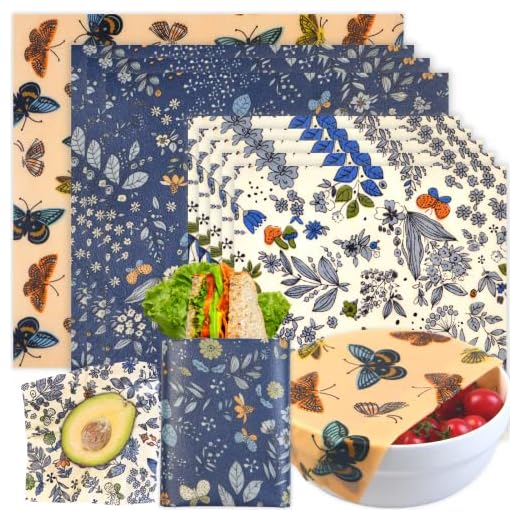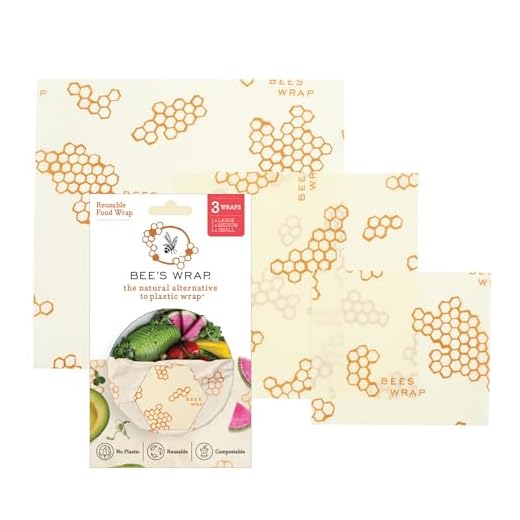
Why Make Compostable Sandwich Wraps?
You cut waste. You save money. You make wraps that break down, not clog landfills. This guide shows six plain steps. You will end with wraps you can use, wash, and compost. They last for months with care and pride.
What You Need
You need:
Wrap Your Food in Sustainability with Our Compostable Cling Film
Pick and Prep the Right Fabric
Natural cloth wins. Why buy plastic when cotton will do?Pick tight-weave cotton. Use unbleached cloth for color and safety. Choose quilting cotton, flour-sack towels, or old sheets that still feel firm.
Cut to the size you need. Make 12×12 inches for a sandwich. Make 16×18 inches for a large wrap. Use sharp scissors and square your edges.
Prewash the pieces. Wash in warm or hot water with a mild detergent. Skip fabric softener. This removes starch and lint. Dry the pieces flat on a towel or a rack. Smooth them while damp.
Trim loose threads. Snip frayed edges close. Inspect each square for holes or thin spots. Simple prep makes a strong wrap that lasts.
Choose and Melt Your Wax
Wax is the secret. Beeswax or soy — which will you trust?Break the wax into small pieces. Use a grater or chop a bar into chunks. Smaller bits melt fast.
Use a double boiler or set a glass jar in a pot of hot water. Heat slow. Do not scorch. Keep the water at a bare simmer.
Stir as it melts. Add a few spoonfuls of grated wax at a time. Keep heat gentle. Try beeswax pellets or grated bar wax for ease.
Quick tips:
Aim for a runny, clear mix.
Add Oil for Flex and Seal
A dash of oil stops cracks. Small trick. Big result.Measure oil with care.
Add 1–2 teaspoons per 1/2 cup of melted wax. Start at the low end.
Stir well until the mix looks glossy and even. Use a wooden or heatproof spoon. Keep the heat low.
Use food-safe, low-odor oils. Examples: jojoba oil, fractionated coconut oil, or sweet almond oil. Avoid strong scents and oils that go rancid fast.
Test one scrap first. If the cured wrap feels stiff, re-melt and add a tiny bit more oil (a 1/4 teaspoon at a time).
Apply the Wax to the Fabric
Brush it on. Thin and even beats clumps and drips.Lay parchment on a tray.
Place the cloth on top.
Brush the wax mix across the cloth in smooth, straight strokes.
Push the wax into the weave with the brush or a clean sponge. Aim for one even coat.
Flip the cloth and coat the other side if you see thin spots.
Use a hair dryer or short oven blast to reflow wax and even the finish. Heat until the wax pools and then smooth it out.
Keep strokes short and firm. For a 10×10 in wrap, try 6–8 strokes per side.
Cure, Trim, and Finish Edges
Let it set. Cut to fit. Small cuts make neat wraps.Let the wax cool and harden.
Hang by a peg or lay flat on parchment to cure.
Wait 10–30 minutes. Twenty minutes works for a 10×10 inch wrap.
Trim the edges with sharp scissors.
Cut close but leave about 2–3 mm for a hem.
Round the corners to stop wear.
Trace a coin and cut the curve to prevent fray.
Stitch a quick hem for strength.
Use a running stitch or a sewing machine. Or use a hot knife to seal blends.
Test a fold with your hands.
It should hold shape and soften with your warmth. Recoat if it cracks.
Use, Clean, and Store Your Wraps
Use like plastic, wash like cloth. Want less waste? Start here.Wrap sandwiches and snacks. Fold like an envelope. Press the edges. Warm the seam in your palms for 10–15 seconds to seal.
Wash with cool water and mild soap. Rinse well. Do not use hot water or scrub hard. Hot water melts the wax. Scrubbing wears the fabric.
Air dry flat. Lay the wrap on a towel or rack. Avoid tumblers and dryers.
Store folded in a drawer. Keep away from heat and sun. For a quick lunch, tuck a wrap under your lunchbox.
Make One. Make Many.
You made a tool. You cut waste. Keep your wraps. Rewax when needed. Teach a friend. Try it now. Share photos and tips. Small acts add up. Make more. Pass them on. Start today. Inspire others. Do it now please.













